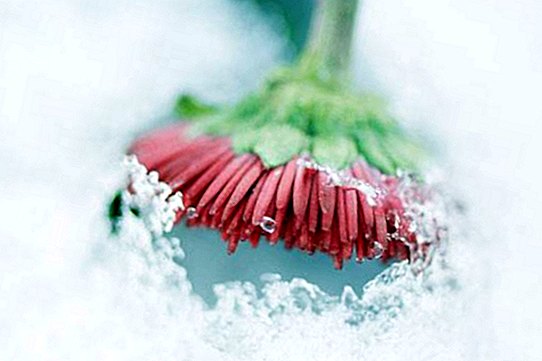Hibernate plants: 10 tips for balcony & terrace

The winter quarter: Who goes in?
Most balcony flowers are one-year-old. That is, they flower, form seeds, die off and land on the compost with a sigh. But with fuchsias that refine over the years, and geraniums worth the winter in the house. Even southerners such as oleander, Schönmalven, lilies, olive trees and citrus fruits come in.
When and how?
To start the resting phase, the plants should no longer be fertilized from September. When the first night frosts announce, they come into the house. First, cut the shoots back, collect withered leaves and flowers, examine the plants for pests and allow the roots to dry. Since a winter quarter never offers optimal conditions, the stay should be as short as possible.
Where?
Ideally, fuchsias and geraniums stand on the windowsill in a bright, cool room (e.g., unheated bedroom, conservatory, loft, utility room or staircase window). You can also spend the winter at the cellar window; They lose their leaves in the dark, but that's not bad. If the plants are too warm, lice and mites attack them.
And then?
In winter quarters, plants are particularly susceptible to fungi and pests. Therefore, keep checking the plant for pests and remove diseased leaves. Please pour only sparingly and, if possible, ventilate from time to time. As growth decreases in winter, there is a risk that the roots rot.
We stay outside: packing pots
For potted plants that stay outside, the following applies: The vessels must be packed in a thick coat made of fleece or jute. Not so nice, but also winterproof: bubble wrap. Otherwise the root bales, which are normally protected from the soil, are exposed to frost. By the way: Jute is available in different colors (for example at www.stoffhaus-kepper.de) and can be draped around the pots with colorful ribbons. In addition, you can cover the soil with pretty mosses and cones, bring color rose hips and dark red dogwood branches.
On a big foot
All vessels that remain outdoors should be placed on feet or ridges to allow the air to circulate between the vent hole and the floor. Only then can an ice plug in the opening defrost quickly and drain off the water unhindered.
Bamboo and roses
Bamboo and Hochstammrosen need shade and wind protection in winter. Therefore, you should wrap the plants completely with reed mats or fleece. It is important that the fabric is permeable to air and bright - otherwise there is a risk of fungal attack. Especially with roses, the soil should be covered with leaves or fir branches. Ideal, however, is a frost-free, bright winter quarters.
Herb garden
Smaller pots, for example, with perennial herbs such as marjoram or mint, come in a cardboard box, which is filled with dry leaves. Cover the plants with foliage too.
Beautiful winter balcony
Beautiful berry and peat myrtle are great for the winter balcony: between the evergreen foliage, red, pink and white berries shine in winter gray. Also hardy grasses (miscanthus, Rohrglanzgras or Hainsimse) are a nice eye-catcher; All you need is a sheltered, shady place to spend the winter. By the way: Evergreen plants have to be watered all year round!
Spring is approaching!
The plants from the winter quarters from the beginning of February warm and bright, preferably at room temperature to the sunny window. Cut back at the beginning of the shoot. Once the first leaves are visible, pour and fertilize normally again. Cut grasses down to one centimeter, then they grow again really nice. Oleander, lilies, olive and citrus trees easily get sunburned - so put them outside on a shady spot.










